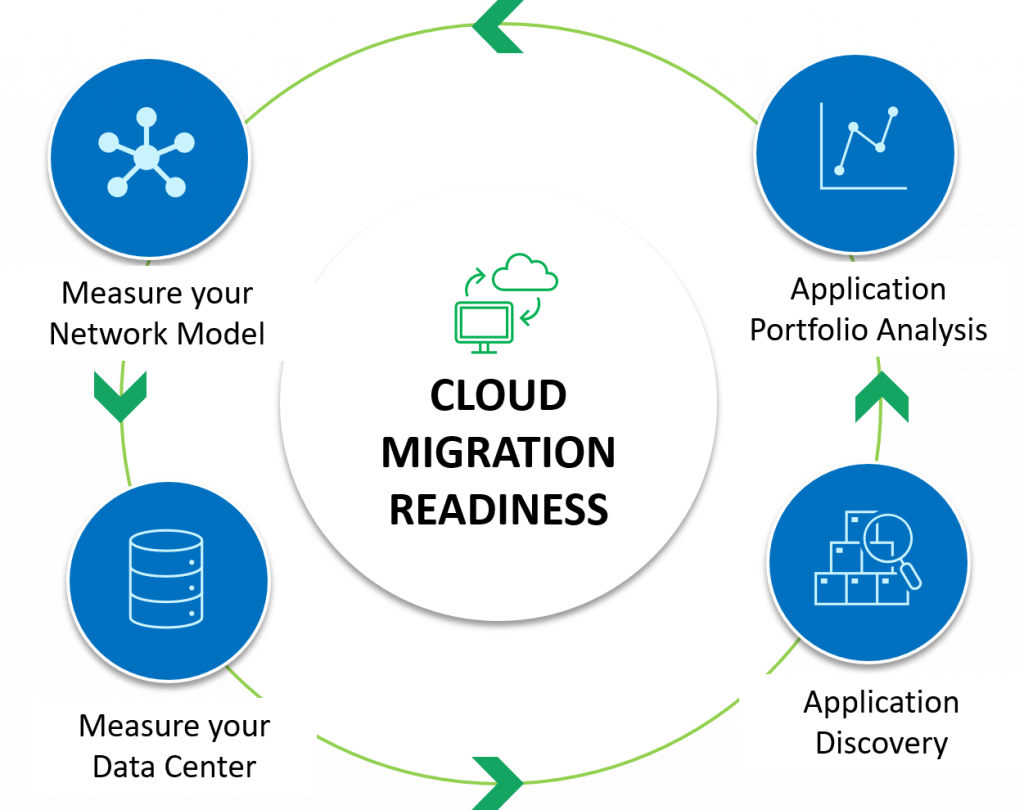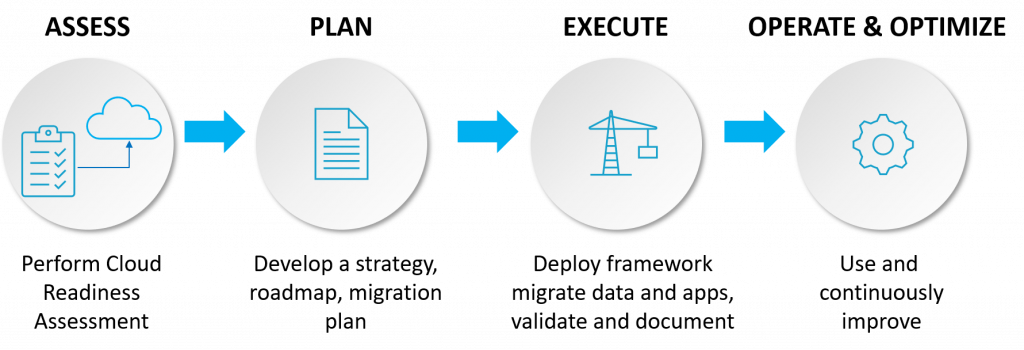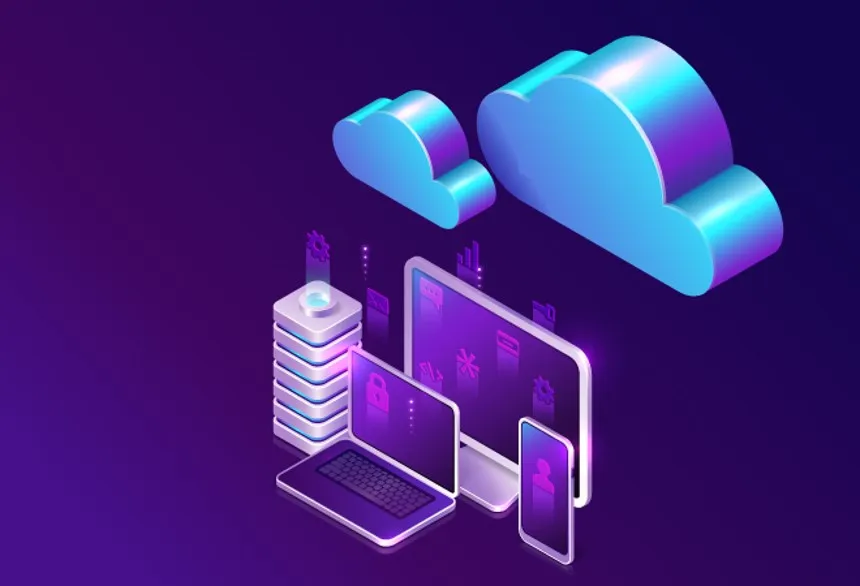



Migrating your current applications and IT assets to the cloud present a break to convert the way your organization operationalizes it. According to Gartner 2020 technology trends report, by 2024, legacy applications migrated to public cloud Infrastructure as a Service (IaaS) will need optimization to become cost-effective. CIOs need to consider how these trends will impact their cloud adoption and migration plans. This will help them prepare for a seamless cloudification journey for their enterprise and their IT infrastructure. Cloud providers have recognized vital factors to successful IT revolution through their implementation by engaging and supporting enterprise customers. Migrating to any cloud is an iterative process that evolves your business. And a successful Enterprise Cloud Migration Strategy methodology details the principles required to drive migration tactics. In this blog series, we share the best practices to be adopted before and during a successful cloud migration by enterprises.

Before You Migrate, Build a Business Case
There are multiple challenges involved in a successful enterprise cloud migration. It differs as per your unique business scenario, the order of priority, and how you tackle them. However, why are enterprises moving to the cloud? The answer lies in the value and advantages of cloud computing. A successful enterprise cloud migration may lead to cost savings, operational flexibility, productivity, and speed of delivery. Before you migrate, it is essential to structure a clear and convincing migration business case for your organization to support the initiative. A use case is built or designed considering factors like business value, run cost analysis, cost of change, and labor efficiency.

While building the use case, you need to consider the right-size mapping with estimate cost services (compute, storage, network, database, etc.) required to run the existing applications and processes on cloud. It includes capacity views and utilization as provisioned. This initial examination of the application discovery statistics will help you regulate the run rate and migration cost, the requirement of resources, and timelines for the migration.
Measuring Data Center, Application, Infrastructure
Application discovery in simpler terms is the process of understanding your on-premises environment, determining what physical and virtual machines exist, the type of applications running on those servers. Your organization has to take a standardized approach to run on-premises application portfolio details, servers, and resources to develop your business case and plan your cloud migration for enterprise strategy. You can classify your organization’s on-premises environment based on the operating system, application designs, and business states. This classification can be helpful for cloud migration holistically.
Configuration Management Database (CMDB) is the common source for collecting or measuring data relevant to the data center/application/infrastructure. Manually executing the application discovery can take weeks or months to perform. We recommend the use of automated discovery tools such as ServiceNow, OneTrust, or AWS Application Discovery Service. You would experience the automation of all the discovery tools, supporting infrastructure, including sizing, performance, utilization, and dependencies.
Network Model
Measuring the network model is the most fundamental requirement in any cloud migration. Adding to the same, understanding the blueprint, configurations, versions, and model is the key to a smoother migration. The network architecture is the foundation to be considered during the IaaS set up to establish the connectivity and build the network layers without any further examination or glitch. From the beginning of ordering the network devices to the end of testing, it takes tremendous effort to get the application on board without any hassle. Considering the use case model, this layer is a significant requirement.

Application Portfolio
Application portfolio analysis considers the application discovery information and commences grouping applications based on patterns in the portfolio. It classifies the order of migration and the strategy for migrating the given pattern. The result of this examination is a broad classification of resources aligned by common characters.
Special cases may also be recognized that need special management. The high-level analysis is based on the mainstream of the servers with standard OS version, distribution of databases across numerous platforms, the grouping of applications and servers by business unit, grouping of resources across the type of environment, like production and development. The data-driven insights from application discovery work will become the basis for migration preparation as you progress into the migration readiness phase of your project.
Migration Planning
The primary objective of any cloud migration strategy is to lead the overall immigration effort. This involves managing the scope, agenda, resource plan, problems and risks, coordination, and communication to all stakeholders. Working on the initial plan can establish the project, as multiple teams migrate multiple applications. The migration plan reflects essential elements like migration order for workloads, when resources are needed, and tracking the progress of the migration. The team should align with agile delivery methodologies, project control best practices, a robust business communication plan, and a well-defined delivery approach. Recommended migration plan activities or steps include a review of project management methods, tools, and competencies to assess any gaps. Outline and create the Migration Project Charter, Communication Plan, including reporting and escalation procedures. Mature a migration project plan, risk/mitigation, and roles and responsibilities matrix (e.g., RACI) to achieve the goal.

Cost Estimate of Resources: Manpower, Software, Hardware
Your business should be more attentive and focused on the cost of resources such as manpower, software, and hardware, which is another critical zone. Planning the right resource like labor, hardware, software appliance will boost the migration in the right direction. Operational cost includes the unit price of infrastructure, supply and demand matching, risk of investment in new apps, markets, and ventures, employing an elastic cost base, and building transparency into the IT operating model. Cost avoidance can be measured while setting up an environment that does not create any unnecessary costs. Eliminating the need for hardware or software refresh and maintenance programs is a key contributor to cost avoidance.
In our upcoming part of this blog series, you will learn the six strategies of enterprise cloud migration. Besides, we will help you choose the best strategy according to your business scenario for migrating your data to the cloud.
Take a Cloud Tour
Meanwhile, if you would like to explore a bit more, check out the Product Modernization Hub and how your business can leverage the cloud to catalyze growth with Xoriant’s cloud enablement offerings. Our engineering team has closely partnered and worked with leading industry cloud providers on various services.
Want to experience a seamless cloudification journey for your business, Xoriant experts can help you with your cloud enablement initiatives. Get in touch with us.


 View Previous Blog
View Previous Blog




